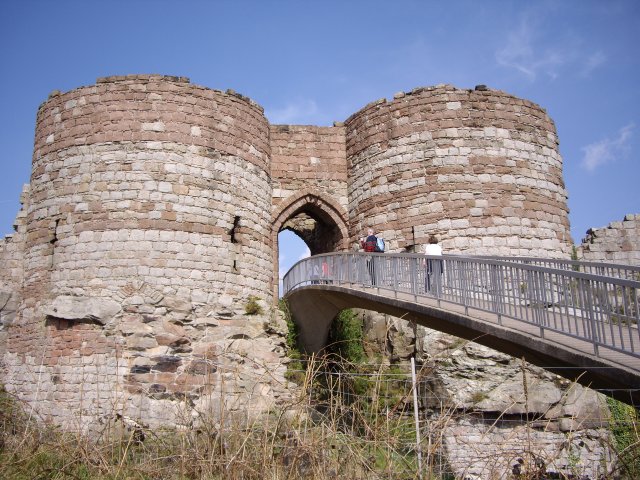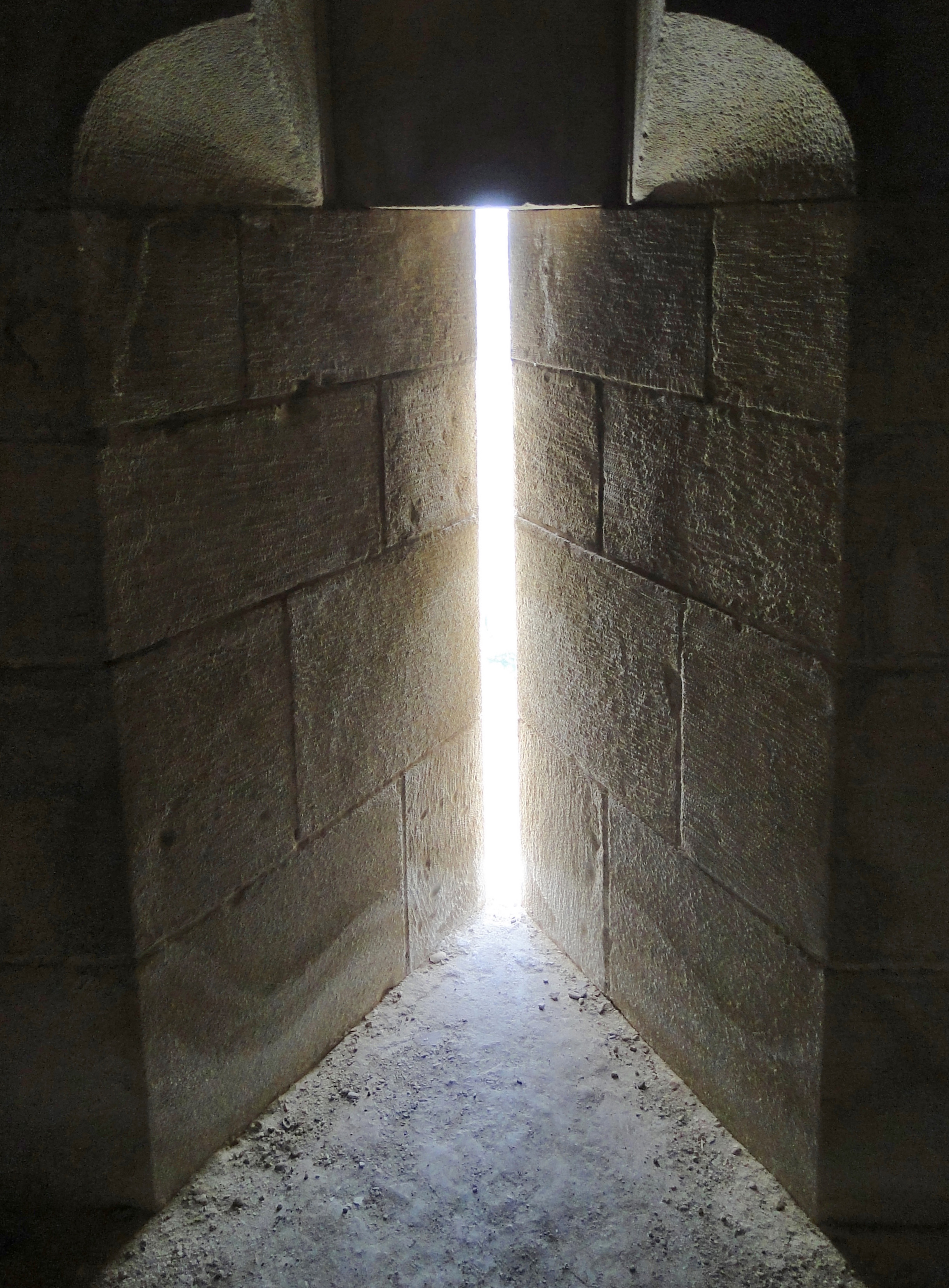Castles 101
Though there is a lot of debate, castles are generally considered to be the private fortified resident of a lord or noble. (Palaces are not fortified) Castles did not serve as a public defense. They originated in Europe in the 9th and 10th century. Castles served not only as military structures, but as centers of administration and symbols of the nobility’s power.
Since their first function was defense, castles often exploited natural defenses like hilltops and cliff faces. As building techniques improved, stone replace earth and timber as the material of choice.
Although there are many styles of castles, they share a number of common features.
Common features
Motte
Earthen mound with a flat top, possibly man made, but may also be naturally occurring. The motte could be constructed out of dirt dug up in the formation of the moat, it might also be created by covering up an older castle or hall whose rooms because underground chambers in the new keep.
Keep
The most strongly defended point of the castle, often in the form of a great tower on top of the motte. The keep was typically used as the residence of the noble castle owner.
Defenses
Bailey
A fortified enclosure outside of the main keep. The knights guarding the lord’s household, the garrison, stables and workshops were often located in one or more bailey structures.

Enceinte
Found in concentric castles which had several rings of fortifications surrounding the keep. When there were several lines of fortifications, the enceinte was the innermost continuous line of fortifications.
Curtain Wall
Thick defensive walls surrounding a keep and bailey(s). These walls were typically over 10 feet thick, wide enough for defenders to walk on and fire arrows on attackers.
Battlements
Architectural elements of the curtain wall designed to assist defenders of the castle. These included gaps and solid blocks on top of the wall for defenders to shoot through/ hide behind (crenellation); wooden(hoarding) or stone(machicolations) projections to allow defenders to drop objects on attackers near the base of the wall while remaining protected.
Arrow slits
After the 13th century small openings in the curtain wall were added to allow defenders to fire arrows or crossbow bolts though the curtain walls
Gatehouse

Fortifications to the entrance to the castle. These might include portcullises, wooden and metal grills to block the entrance, towers with arrow slits, and a rampart and ditch to limit the approach to the gate.
Moat
A steep-sided ditch surrounding a castle. In low lying areas, moats were filled with water and might be crossed with the aid of a drawbridge.

I hope you’ve enjoyed this whirlwind introduction to castles.




Very informative post, short and concise. I have heard most of the terms before, but never knew what some actually referred to. The pictures really made the terms clear. Thank you for the blog hop.
This was so interesting! Thank you so much for the information, as well as for the giveaway!
Susan Heim
smhparent at hotmail dot com
I’m in Florida, USA
Castles are fascinating…I was in one in Ireland on one of the tours we were on and I could just imagine the history and stories and even a ghost or two behind the walls!! Thank you for sharing!!!
I learned a bit more about castles particularly the bit about the Motte and building over an existing structure. Thanks you and thanks for the giveaway opportunity.
sophiarose1816 at gmail dot com
I love the pictures! Would love to see them in person someday!
Great pics! Very interesting, thanks!
Love some of the images you’ve used – what evocative places castles are!
Used to love visiting castles when I lived in Britain – I’m such a history nerd
This was a great blog post, kind of like “everything you always wanted to know about castles.” The illustrations helped a lot too. I’m sure I will find myself referring back over the course of my reading.
DeniseK1@outlook.com
Sorry it takes a little while for comments to show up. They are set to moderate in order to help cut down on spam. I’m sorry that it can be inconvenient.
I could have done with this post when writing mine! The construction of castles fascinates me. I love seeing the holes in the wales where the wooden scaffolding was inserted. The technical feat of constructing such a thing in the days before engines and cranes is truly daunting.
G x
Such interesting information. I’d never heard that they built one structure on top of another like that, but it makes sense. More room for dungeons! 🙂
Thanks for participating in the hop!
I loved the pics also. And as another comment said it made the items more understandable – especially the keep. I wish I could see them in person also.
I liked the pictures of the castles. It’s fun learning about them. Haven’t been to Europe, but I did visit a castle called Casa Loma in Toronto.
U.S. (Toledo, Ohio)
catbooks72(at)gmail(dot)com